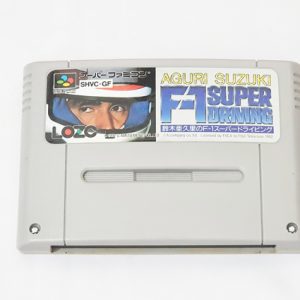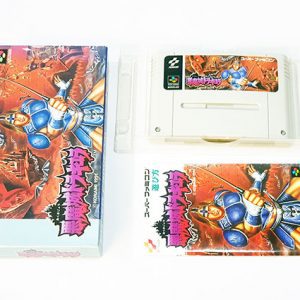Nintendo Super Famicom
To compete with the popular Family Computer in Japan, NEC Home Electronics launched the PC Engine in 1987, and Sega followed suit with the Mega Drive in 1988. The two platforms were later launched in North America in 1989 as the TurboGrafx-16 and the Sega Genesis respectively. Both systems were built on 16-bit architectures and offered improved graphics and sound over the 8-bit NES. However, it took several years for Sega’s system to become successful. Nintendo executives were in no rush to design a new system, but they reconsidered when they began to see their dominance in the market slipping.
Designed by Masayuki Uemura, the designer of the original Famicom, the Super Famicom was released in Japan on Wednesday, November 21, 1990, for ¥25,000 (equivalent to ¥27,804 in 2019). It was an instant success; Nintendo’s initial shipment of 300,000 units sold out within hours, and the resulting social disturbance led the Japanese government to ask video game manufacturers to schedule future console releases on weekends. The system’s release also gained the attention of the Yakuza, leading to a decision to ship the devices at night to avoid robbery. With the Super Famicom quickly outselling its rivals, Nintendo reasserted itself as the leader of the Japanese console market. Nintendo’s success was partially due to the retention of most of its key third-party developers, including Capcom, Konami, Tecmo, Square, Koei, and Enix.
- You cannot add "Aguri Suzuki F1 Super Driving (loose)" to the cart because the product is out of stock.
Showing 1–16 of 490 results
-

’95 J-League Excite Stage (loose)
Rp30,000.00 Read more -

3X3 Eyes: Juuma Houkan
Rp600,000.00 Add to cart -

AC Adaptor [HVC-002]
Rp400,000.00 Add to cart -

Ace o Nerae!
Rp450,000.00 Add to cart -

Action Pachio (loose)
Rp200,000.00 Read more -

ActRaiser
Rp500,000.00 Add to cart -

Aguri Suzuki F1 Super Driving (loose)
Rp50,000.00 Read more -

Akumajo Dracula
Rp1,800,000.00 Add to cart -

Aladdin
Rp750,000.00 Add to cart -

Aoki Densetsu Shoot!
Rp400,000.00 Add to cart -

Area 88
Rp1,200,000.00 Add to cart -

Area 88 (loose)
Rp300,000.00 Read more -

ASCII Pad (loose)
Rp300,000.00 Read more



